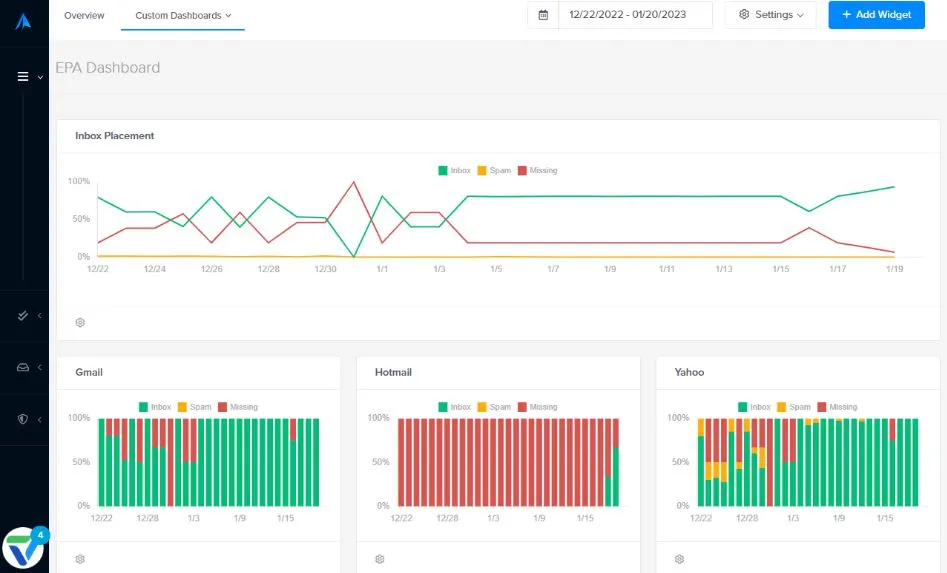
Think your email marketing strategy is good enough to tackle the challenges this year has in store? There’s only one way to find out—and that’s to stress test your email program.
Stress testing involves promoting different scenarios and analyzing the results, which can help you identify the aspects of your email program that are working well—and those that need to be improved.
This helps you optimize your email program for maximum performance and ensure it can handle the demands of a high volume of outbound emails. Plus, stress testing can help you identify and fix any potential issues before they affect your bottom line. Score!
Ready to watch your email performance soar to new heights? Let’s explore how stress testing can help you reach your goals.
Why is now a good time to stress test your email program?
Last year presented marketers with several challenges—and they’re only expected to continue in the new year. Businesses are feeling the pressure to perform amidst a worsening economic climate, widespread layoffs, evolving privacy concerns, and rapidly advancing technology.
As you look to the future, it’s important to ensure your email marketing strategy is strong enough to handle the unknown. Stress testing your email program is a good first step, and there are a variety of tests email marketers can run to keep their email programs safe and effective.
Where should you begin?
Before starting any stress test, there’s one thing you need to do: plan it out!
Having a testing framework allows you to understand what is being tested and gain visibility into its effectiveness.
To help you get started, here are some of the key steps involved in stress testing:
- Define your goals
- Outline the scenarios and metrics you will use
- Set up a test environment to simulate the conditions of your test scenarios
- Run the test
- Measure and analyze the results
- Make any necessary changes to your email program
Once you’ve created a plan that determines how your stress tests will be conducted, you can identify which features of your email program you would like to test.
Top ways to stress test your email program
You can stress test various elements of your email program to ensure it’s capable of handling high volumes of outbound emails and maintaining strong deliverability throughout the year.
It’s important to note that depending on your setup, you may be limited to what you can stress test. For example, shared IP environments usually have limitations to allow fair usage of available resources. Be sure to identify any limitations during the planning process.
Ready to get started? Here are some elements of your email program you can try stress testing today:
1. Volume increase
Mailbox and blocklist providers are not fans of volume swings. Why? These swings tend to mimic the behavior of compromised servers that are being used to send mass phishing and spam messages. Yikes.
However, there are cases where there’s a justified need to send large amounts of messages through your email servers. The general rule for any volume increase is to plan it out and reduce the risk through a process called IP warming. This helps you gradually increase send volume rather than flipping the switch overnight.
But what does that gradual increase look like? Should you increase your send volume by 30 percent, 40 percent, or even 50 percent? And should you be increasing it daily, every other day, or once every week? The answer: it depends!
Increasing volume is stress testing in its very essence. This is why monitoring deliverability and sender reputation is vital during IP warming. Consider implementing a deliverability solution like Everest, from Validity. Everest allows you to see when mailbox providers are placing your messages in the spam folder or choosing to block them altogether (see Figure 1). So, instead of continuing to increase volume, you can adjust your ramp-up strategy accordingly.

Figure 1: Everest dashboard
2. Email sending capacity
When sending to large lists, sending campaigns with lots of HTML code can take a long time.
For example, let’s say you send a message containing 102KB of HTML code (i.e., Gmail’s clipping limit) to a list containing 10 million addresses. To do this, your email sending platform will need to push out over a terabyte of data in SMTP alone! It will take your server a while to process this—and if personalization is added to the mix, it can take even longer.
To effectively stress test your sending capacity, you’ll need to send emails—but not to real addresses. Tools like Mailtrap, SES mailbox simulator, and MailCatcher help with exactly that. Some senders even choose to use free disposable email addresses. These options allow you to test your sending capacity without risking your deliverability or sender reputation.
Be sure to record how long it takes to push emails out in this controlled environment. Just keep in mind that your throughput will be different when sending live campaigns, as mailbox providers often throttle incoming connections.
3. List quality
If there’s anything mailbox providers can’t stand, it’s poor list quality. Sending to a low-quality list full of nonexistent, misspelled, or invalid email addresses is one of the quickest ways to tank your deliverability and harm your sender reputation.
To alleviate the pressure of sending an initial message to learn if an address exists, try using an email validation service. This is especially useful when acquiring new subscribers, trying to talk to subscribers you haven’t talked to in a while, or doing a regular list cleanup.
With the global trend of mass layoffs, many emails addresses are no longer active, which means regular list cleaning is more important than ever to the success of your email program.
4. Message content
One of the most important aspects of any email campaign is the content of the email itself, so it’s crucial to test its effectiveness before hitting send.
Here are some of the main content elements worth stress testing:
- Personalized elements: Consumers are demanding personalized experiences from brands. Studies show 80 percent of consumers are more likely to buy from a company that provides a tailored experience, and 72 percent will only engage with personalized messaging! So, it’s crucial your emails meet these expectations. Ensure placeholder content (or dynamic blocks) are correctly processing and/or are being replaced with personalized data, and consider using tools that allow you to access messages that were sent to monitored accounts. This allows Q&A teams to perform validation.
- Subject line: While most of us have been taught not to judge a book by its cover, that won’t stop subscribers from judging your email by its subject line. Therefore, it’s important to check that subject lines and pre-header text are readable. Try using a subject line previewer tool to gain insight into how the text looks on different devices and across different email clients. That way you’ll have the opportunity to tweak the copy before hitting send.
- Email design: You work hard to make sure your emails look excellent, so it’s important to make sure that hard work isn’t in vain! To ensure your messages look good and function properly on all the devices your subscribers use to open, consider using tools like Everest’s Design Preview and HTML Email Check. They can provide instant feedback so you know your emails are rendering correctly and will have the desired impact once you hit send.
- Link destination: Links contained in messages will direct people to a destination, usually a webpage hosted at a web server. Stress testing your server’s capacity to handle multiple simultaneous requests is important, and with the right tools you should be able to grow your hosting infrastructure according to user demand.
Why stress when you can test?
All in all, stress testing your email program is like hitting the gym. It helps you identify the areas that need improvement and gives your program the strength to handle any and all challenges thrown its way. So, make stress testing a priority this year, watch your email program flex its muscles, and achieve great results!
One more tip before you go: an email program is only strong as its sender reputation. Could a poor reputation be tanking your deliverability and harming your email program? Check out our free cheat sheet, Top 5 Ways You’re Ruining Your Sender Reputation, to find out.